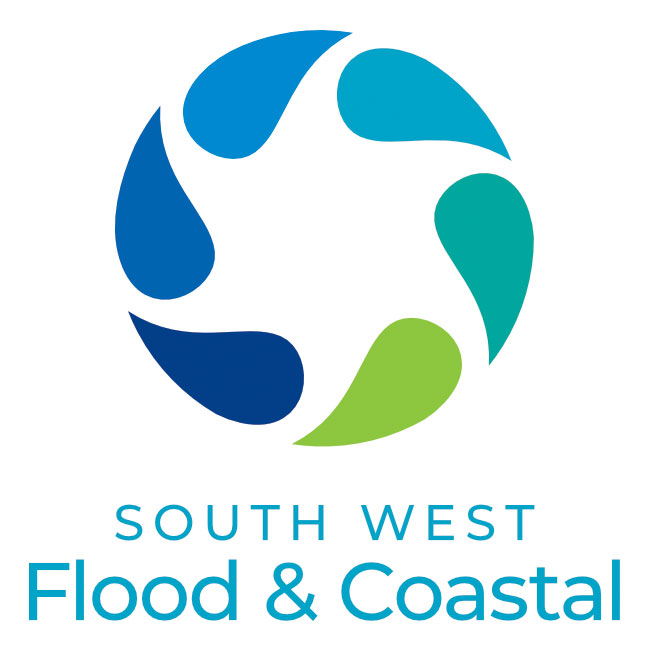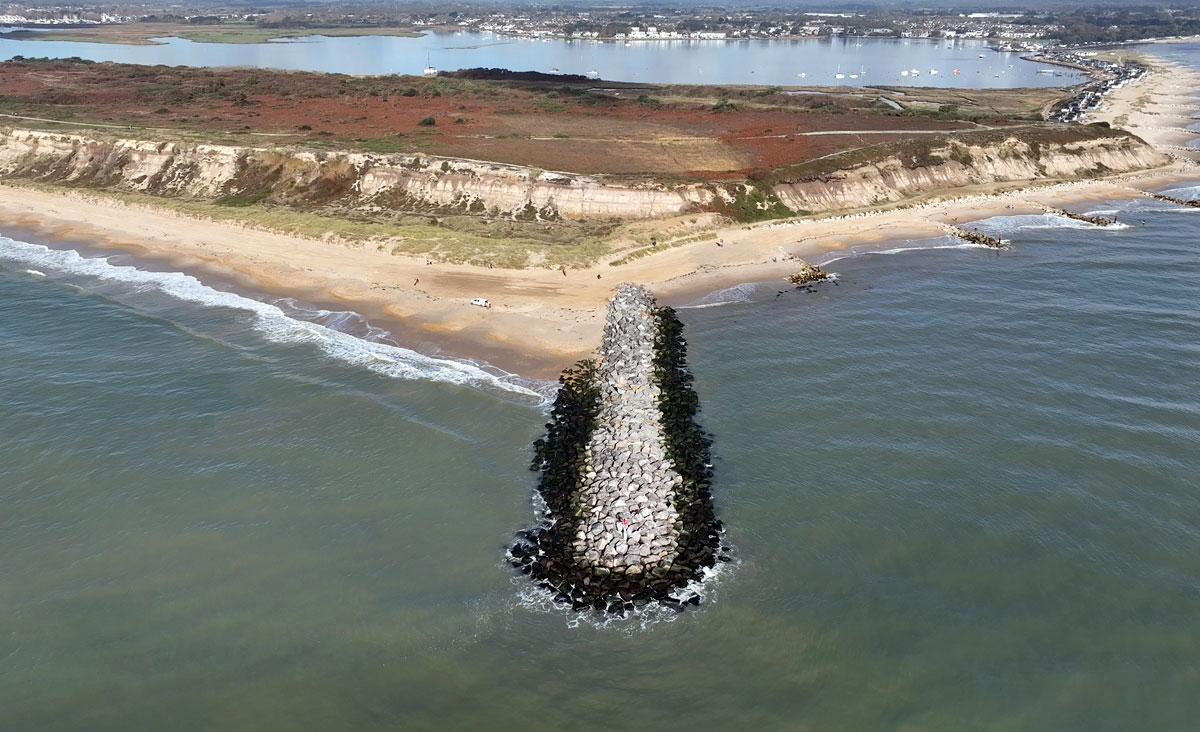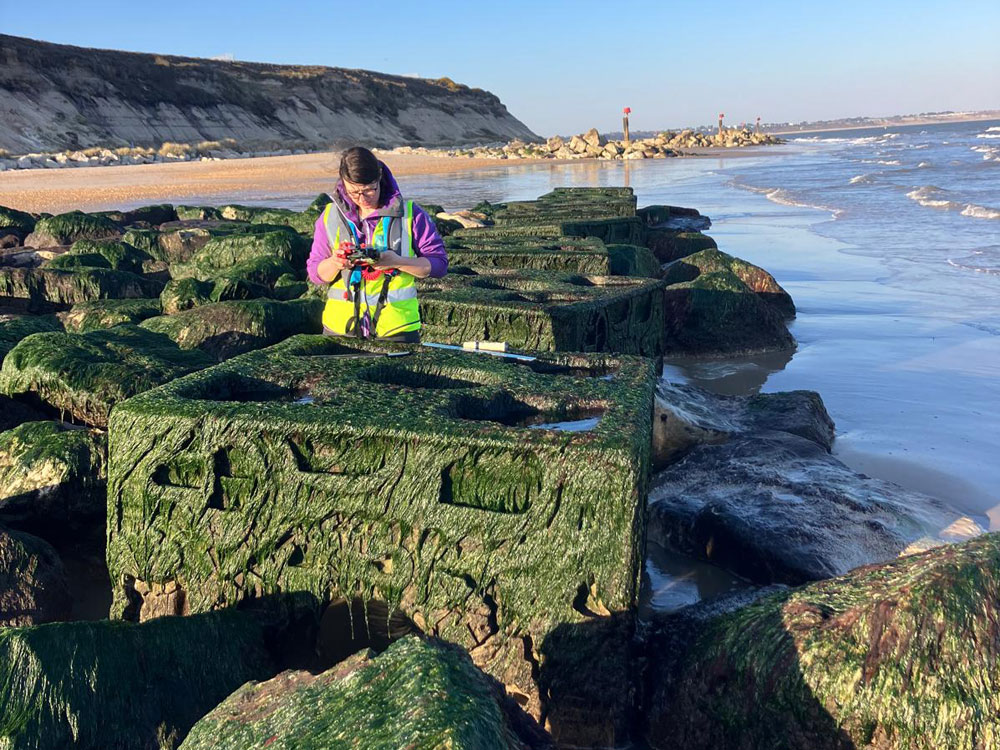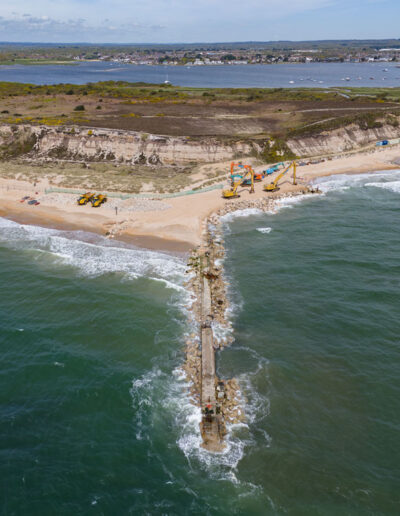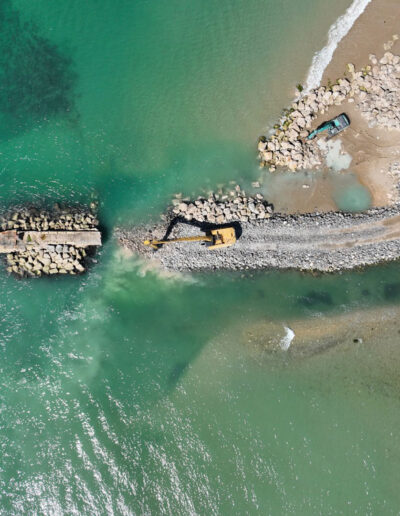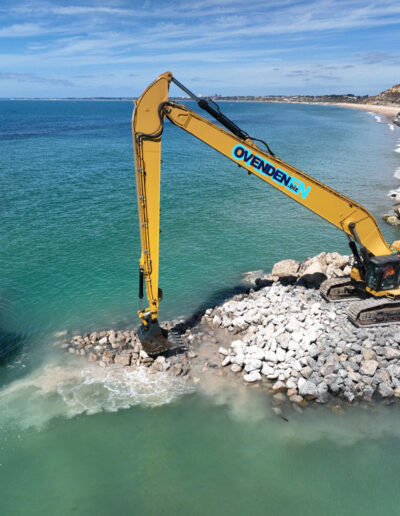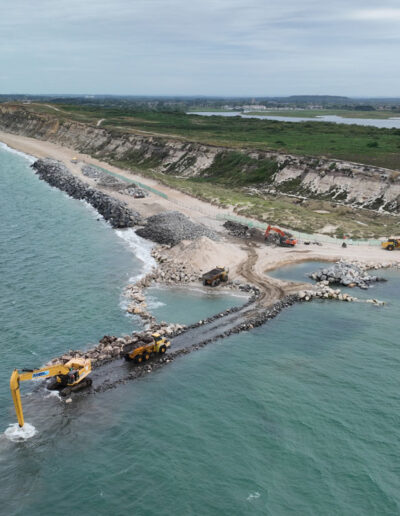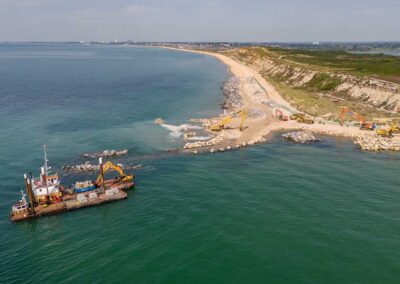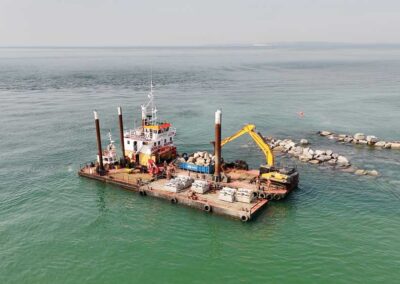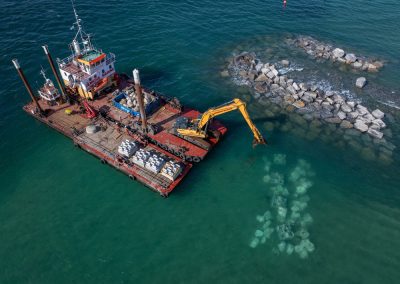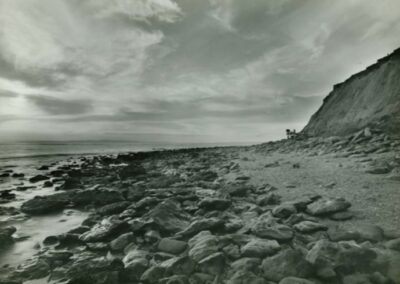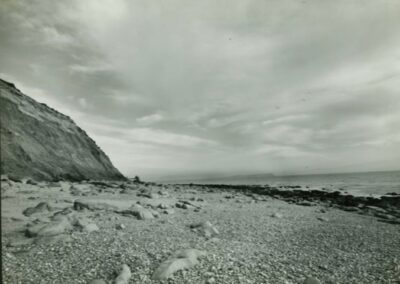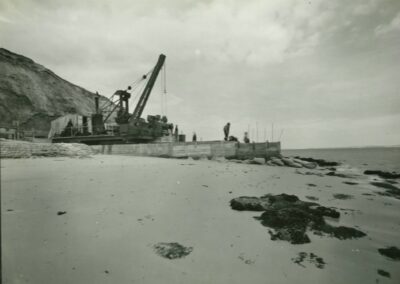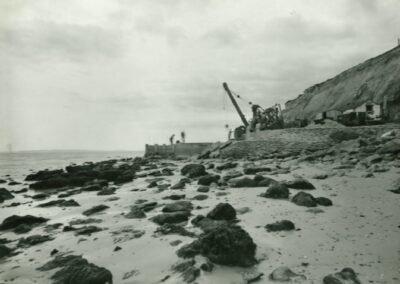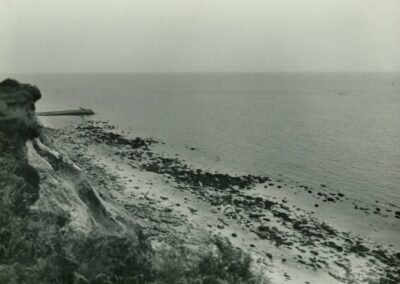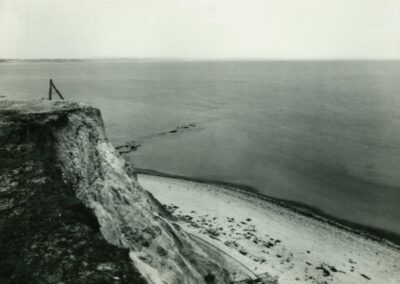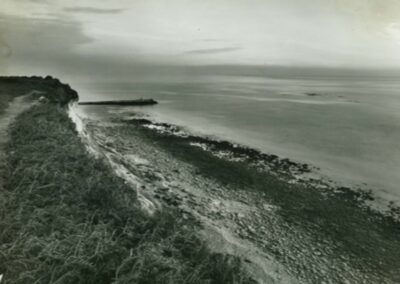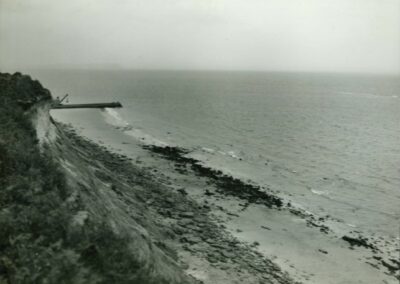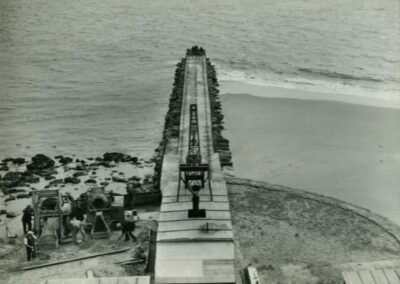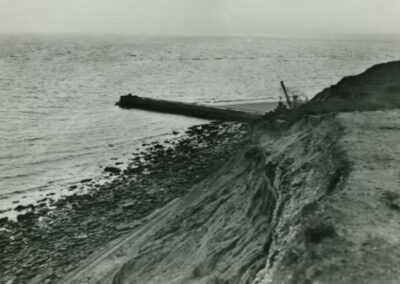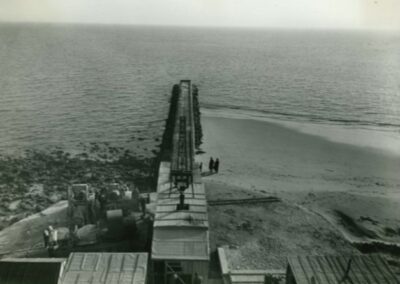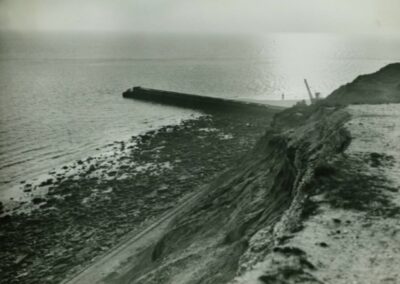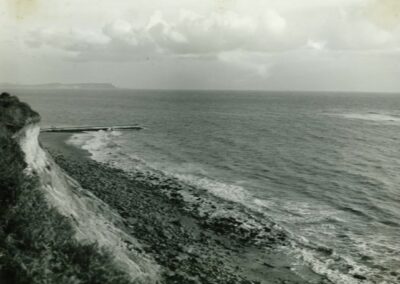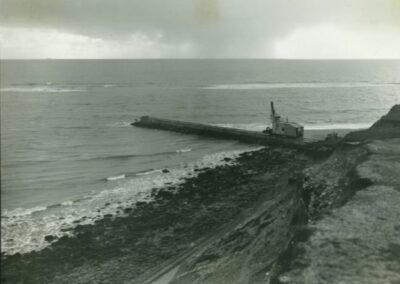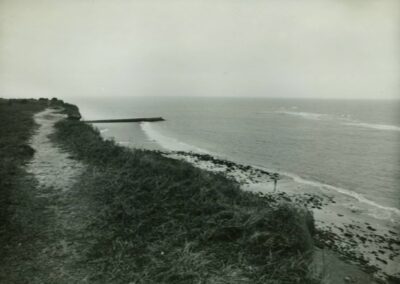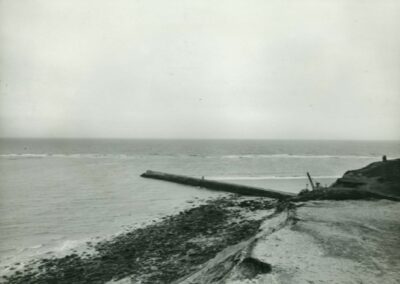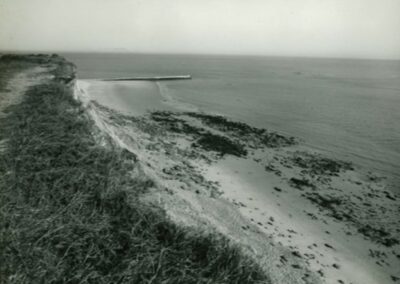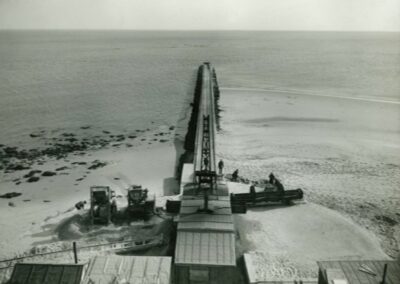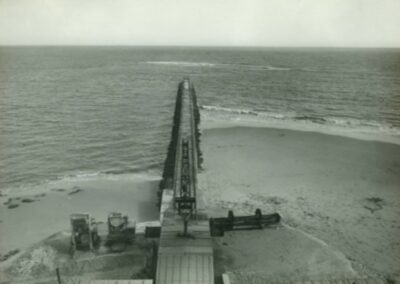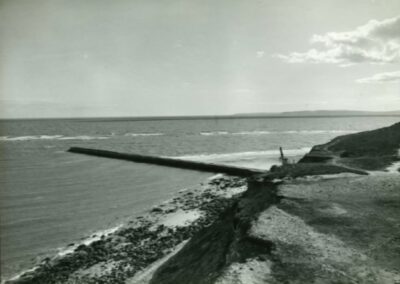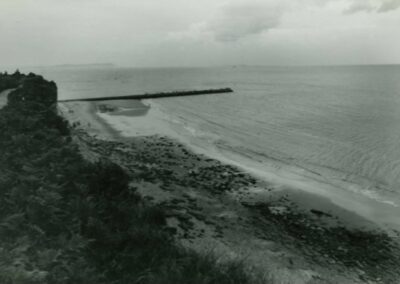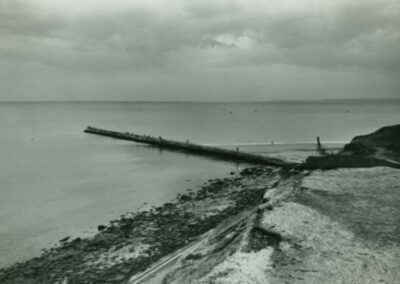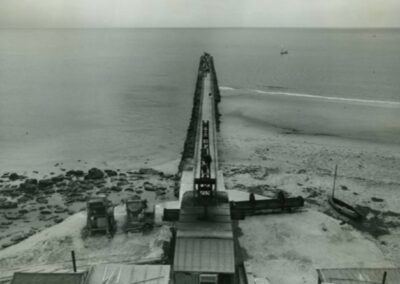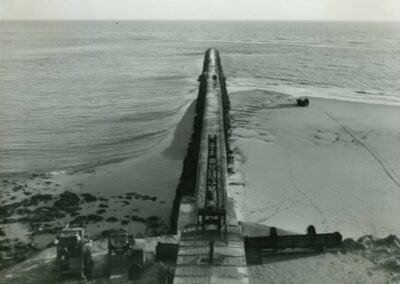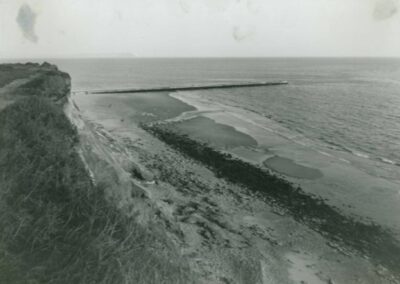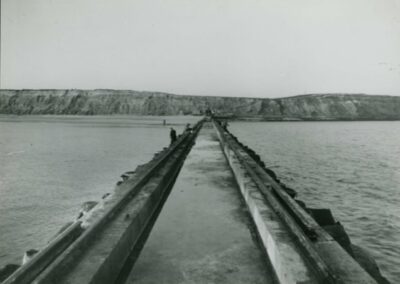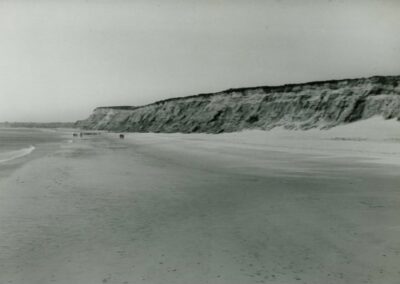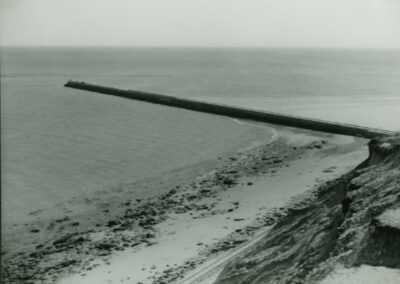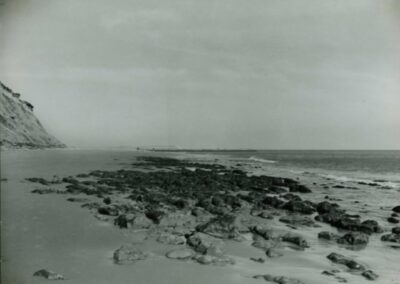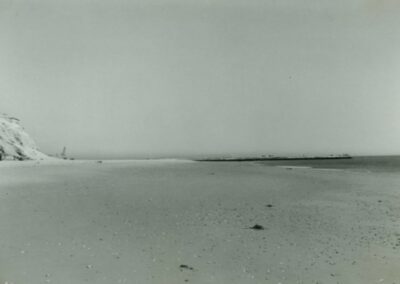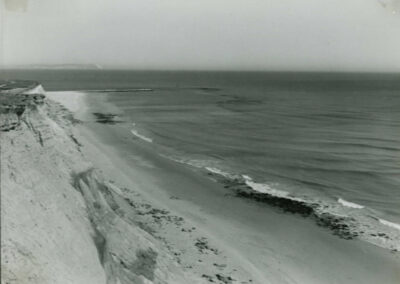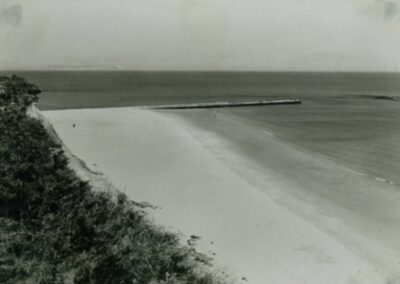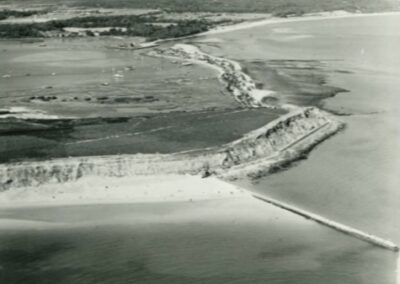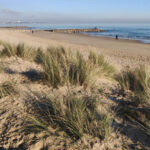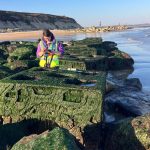Completed Project
Hengistbury Head Long Groyne works 2021-2024
As part of a 17-year Beach Management Scheme, the Long Groyne was repaired & upgraded between April – October 2024
Lead Authority
BCP Council
Working with
Project start date
22 November 2021
Project completed
October 2024
Page last updated
21 August 2025
Long Groyne completed
The upgrade of the Long Groyne was completed in October 2024 and the surrounding beach was restored.
Our contractors worked with the tides around the clock, placing a total of 33,500 tonnes of rock that arrived by sea from France and Norway. A host of environmental enhancements were incorporated into the design to provide important new marine habitat.
To the west of the Long Groyne towards Solent Beach Car Park we made efficient use of the machinery and rock on site to replace and strengthen two life-expired timber groynes as part of our ongoing Asset Maintenance programme in October/November.
The Long Groyne – One Year On
Since works to the Hengistbury Head Long Groyne were completed in October 2024, we have continued our regular beach monitoring, surveys have been carried out on the marine habitat structures, and the project has been nominated for a People's Choice award
Background to the works
The Long Groyne at Hengistbury Head plays a critical role in reducing coastal erosion in Poole Bay and is a stabilising feature for Christchurch Bay. However, during storm events the original structure was regularly submerged meaning it was unable to continue to perform effectively, particularly with the additional threat of sea level rise.
A detailed inspection of the structure in 2019 revealed the groyne to be in very poor condition. Subsequent ground investigations and underwater surveys through 2021 & 2022 helped us prepare for the significant works required to protect the coastline from sea level rise over the next 100 years.
Planning permission was granted for the project in September 2023. On-site preparations started 11 March 2024, with works licensed to take place from April-October.
The Long Groyne project video
From rock deliveries in April to installing artificial marine habitat enhancements, and completion of the repaired & upgraded Long Groyne in October 2024; our video condenses project progress into 3 minutes.
The full Countryfile ‘Hengistbury Head’ episode aired 14 July 2024, but was removed from BBC iPlayer 12 months later
Countryfile at Hengistbury Head, July 2024
Sean Fletcher from BBC Countryfile meets Matt Hosey, Head of Service at South West Flood & Coastal and the team reconstructing the Long Groyne at Hengistbury Head to find out how BCP are defending the coast from flooding and erosion.
Sean jumps into a giant dumper truck and drives out to the groyne with Site Manager Maz Tamimi, then joins Dr Alice Hall, Marine Biologist, on the beach to learn how marine life will be offered new, artificial reefs to colonise around the new groyne.
Deconstructing the original groyne
Construction
- Work to dismantle the original concrete groyne was carried out in short sections at a time to ensure beach material remained in place
- Concrete from the original structure, along with the old rock armour, has been used to form a new core base
- New rock armour has been placed on top in the same footprint as the original groyne.
Cross section of the upgraded design
The upgraded long groyne design:
- Maintains the same alignment and length as the original groyne (approximately 150 metres).
- Is 1.5 metres taller along its crest than the original groyne to allow for increased storm events and predicted sea level rise.
- Is wider than the original groyne to provide additional stability in this exposed location.
- Is covered entirely in rock, using a natural quarry stone (armour) from France & Norway, chosen for its durability.
- Uses larger rocks (6 – 10 tonnes) than the original, to cope with the exposed location of the structure and the expected wave conditions.
- Re-uses material from the original structure wherever possible to avoid having to send material to landfill, and to minimise the amount to new rock required.
- Floating groyne markers have been placed at the sea end to aid navigation.
Project aims explained by Richard Slee, ITV News
Video courtesy ITV News Meridian, 23 May 2024
Why the works were needed
If we had done nothing to repair or upgrade the long groyne, then;
- The rate of erosion would rapidly increase at Hengistbury Head, resulting in the loss of beach followed by erosion of the cliffs;
- The long-term loss of land would extend across Purbeck, Bournemouth, Christchurch, Poole and the New Forest, including damage to infrastructure and thousands of properties;
- Mudeford Sandbank could be breached, creating further inlets to Christchurch Harbour;
- Both Poole Bay and Christchurch Bay would weaken and eventually become one bay.
New marine habitat
A number of environmental enhancements have been incorporated into the design of the upgraded long groyne, promoting biodiversity by creating complex habitats for fish, invertebrates, and algae.

Granite rock pools
Shallow rock pools have been ground into several of the granite rocks that make up the Long Groyne, providing a basin that is flushed by the sea on high tide and exposed at low tide.

Limestone rock pools
Rock pools have also been ground into limestone reclaimed from the original Long Groyne and placed all around the marine habitat units above. Being quite porous, and already acclimatised to the marine environment, limestone is ideal for promoting further marine growth.
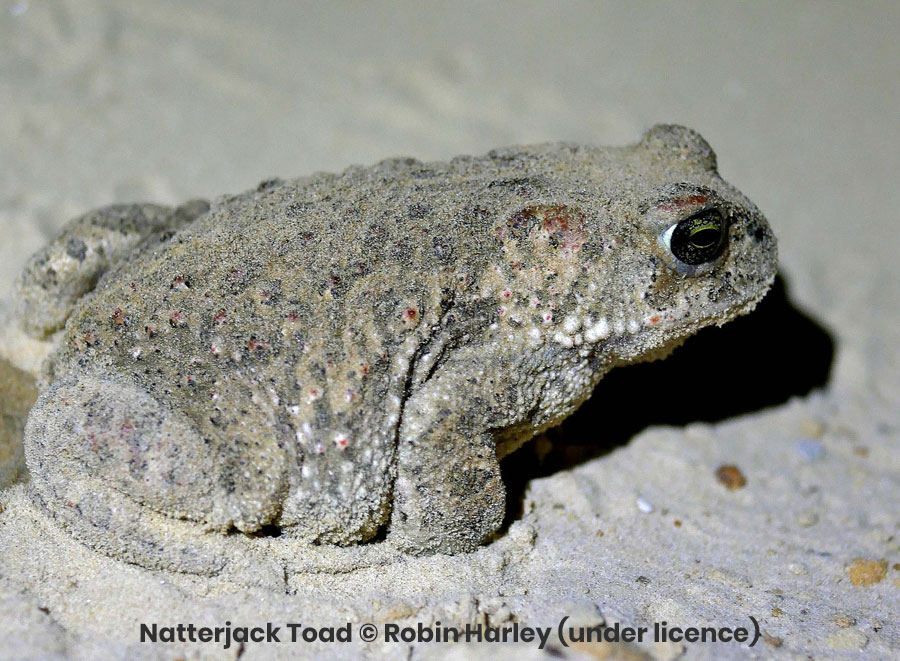
Natterjack Toad conservation
We are also supporting conservation of the rare and endangered Natterjack Toad within Hengistbury Head Nature Reserve, through the funding of two specialised breeding ponds.
Placing the MOSES reef units in the lee of the groyne
About the Long Groyne
Construction of the original Hengistbury Head Long Groyne was completed in 1939. Its location has enabled beach material to accumulate around the headland, reducing tidal erosion of the cliff face.
From the 1980s to the early 2000s rock armour was added to the concrete groyne structure, and additional groynes were constructed at Mudeford Sandbank, which have further helped stabilise the Sandbank in its current position.
Constructing the long groyne 1937-39, photo gallery
This photo was taken 19th November 1937, during construction of the long groyne; the southern-most tip of the headland shows the threat of erosion to the cliff face.Hengistbury Head Long Groyne, November 1937
The purpose of the long groyne
The Hengistbury Head groyne was constructed between 1937–1939 to protect the headland. It is now well recognised as an “anchor point” that is critical to stabilising and controlling coastal erosion in both Poole Bay and Christchurch Bay. Along with the beach and other shoreline structures, the long groyne helps to protect local communities and infrastructure.
Without it, beach material would rapidly wash away (estimated with in a year), and the cliffs could start to erode again. This would eventually progress to the sea breaching into Christchurch Harbour via locations at Double Dykes and Mudeford Sandbank. The impacts could extend to the Purbecks and New Forest.
The current national policy for most of this populated coastal frontage is ‘hold the line’. This means that existing coastal defences should be maintained, upgraded or replaced in their current position, where funding permits, to reduce the risk of coastal flooding and erosion.
More about coastal defence policies at Poole & Christchurch Bays Shoreline Management Plan
The angle of the long groyne
In recent years, there have been proposals to alter the angle of the groyne, including potentially creating new surfing opportunities. The proposal has been reported on in the local media although it cannot be supported for important reasons, which are summarised as follows:
- It is crucial that the long groyne continues in its main function to limit long term coastal erosion in Poole Bay and Christchurch Bay.
- Coast protection is manageable under its existing configuration as set out in strategic policy (i.e. Poole & Christchurch Bays SMP) which is economically justified*.
- For the last 50+ years the long groyne has profoundly influenced the transit and deposition of beach material from Poole Bay into Christchurch Bay. The volume of beach material from Avon Beach and Highcliffe has then been managed by local beach recycling, when required – for example Christchurch Beach Recycling and Rock Groyne Repairs, spring 2021.
- A change in the angle of the groyne would generate new and unknown hydrodynamics that would affect the entrance to Christchurch Harbour.
- Modelling and data underlines layout changes as being high-risk with high uncertainty (in terms of being able to predict long term implications). Layout changes could trigger wide-reaching impacts on interlinked coastal protection assets across Dorset and into Hampshire.
- Hengistbury Head and its surrounding areas have many environmental designations (both national and international) which must be carefully adhered to. Additionally, the area falls into a Coastal Nature Park, as supported by other BCP Council strategies.
- The legacy council in Bournemouth invested in Boscombe as a surf-based tourism destination. It is supported by local facilities including year-round lifeguard cover, car-parking, toilets, showers, food outlets and accommodation. Hengistbury Head does not have the same offer and is in a more remote, potentially more dangerous location; exposed to swell waves and ebb currents from the Harbour.
* The Environment Agency is responsible for the approval and allocation of all coastal capital funding in England. Capital investment schemes go through an appraisal & approval process both on technical and financial grounds to secure grant funding. To be considered for funding schemes should be in line with the strategic direction set out in the SMP or strategy; they must also contribute to outcome measures and be on the sanctioned list.
Long groyne investigations 2019-2022
Several voids were discovered in the foundations of the original structure during a detailed inspection in 2019, with an associated risk of localised collapse; public access was prohibited for safety reasons pending further investigation.
Following initial ground investigations carried out Nov-Dec 2021, works continued during August 2022 with further investigations to help prepare for the upgrade of the entire long groyne structure.
Underwater surveys mapped out the depth and land beneath the surface while borehole investigations revealed the composition of the ground below the structure. Boreholes up to 20m in depth were collected from both land and sea using a rotary drilling rig (on land) and a sea-based jack-up barge, as shown.
All data collected will help refine the most efficient and effective design for the new groyne structure to ensure the continued stability of the coastline, while protecting it from sea level rise over the next 100 years.
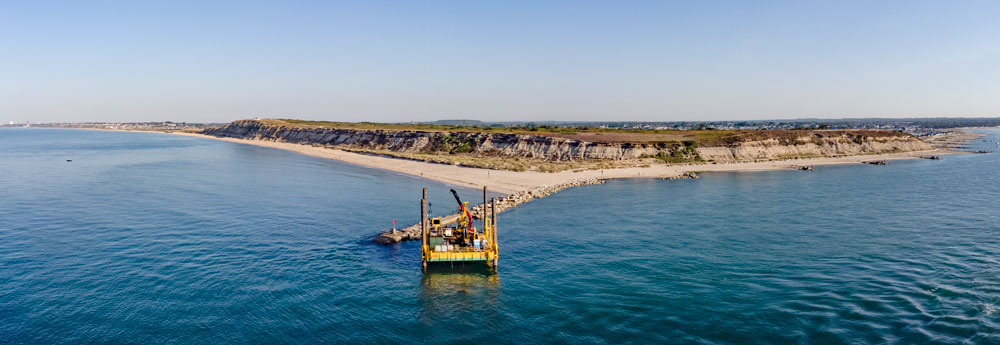
The Sandpiper jack-up barge worked on site during August, taking boreholes from five seabed locations immediately beside the long groyne.

Arc Marine Reef Cubes
Thirteen reef cubes have been placed along the Long Groyne shoreline. Submerged on high tide and visible at low tide, these units enhance marine biodiversity. Small tide pools are cast into the top surface, while the large internal pool provides refuge for small marine organisms during the low tide. The are constructed from a porous, ecologically friendly concrete alternative material and designed with a variety of surface textures to encourage marine growth.

ReefSystems MOSES reef units
The MOSES (Modular Sealife System) reef units are modular, each comprising 40 tubes in a complex structure to provide shelter for fish, marine invertebrates and shellfish. Constructed form ecologically friendly marine concrete and mounted on a heavy base, 20 of these units have been placed underwater at the seaward end of the Long Groyne, with 5 more in the intertidal zone among the reef cubes.

ReefSystems tidal pools
Eight artificial tidal pools have been placed amongst the rock armour of the Long Groyne. They retain water in the basin to accommodate marine life even on a low tide when the sea has retreated. The rough surface and range of depths within the pool are designed to provide habitat for a variety of marine life.
